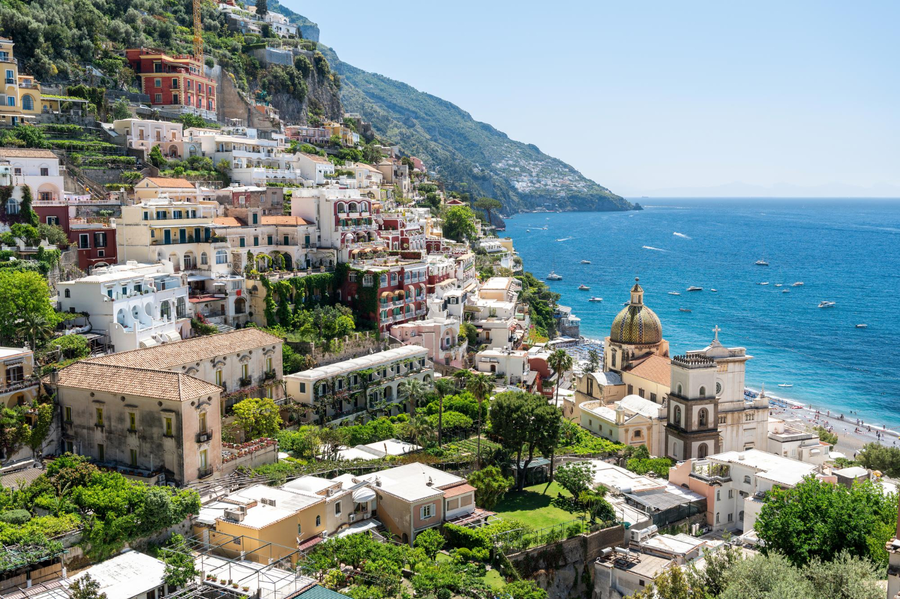How to get a D visa for Italy: steps to legal immigration

** The process of immigrating to Italy begins with obtaining a national visa D, which can later be converted into a residence permit. This long-term visa, unlike the Schengen one, allows for staying in Italy for more than90 days in a half-year period. It is important to note that the national visa D serves as a starting point for obtaining a residence permit, and its issuance is necessary for entry into the country, as a residence permit can only be obtained within Italy. If your stay in Europe is not planned to exceed three months, it is sufficient to apply for a Schengen visa for a trip to Italy.
The grounds for obtaining a D visa are the same as for the categories of residence permits (Permit to Stay). It is important to note that the Italian authorities issue residence permits exclusively on the same grounds as those specified in the D visa. For example, a student visa can only be converted into a student residence permit.
It should be noted that obtaining a D visa is significantly more complicated than obtaining a Schengen visa. This is due to the fact that by granting this visa, the Italian authorities authorize the foreigner to reside permanently in Italy with social guarantees. The Italian consulate carefully checks the documents of applicants, and in the case of D visas are refused much more often. The main reason for refusal of long-term visas is most often non-compliance with immigration rules.
The National D visa for Italy is valid from three months to a year and can usually be converted into a residence permit. Initially, the residence permit is usually issued for one year and can be renewed provided that the grounds for obtaining it are maintained. Like the D visa, the residence permit grants the right to travel and reside in other Schengen countries, but with a limit of 90 days per semester.
It is important to remember that within eight working days of entering Italy on a D visa, you must visit the Questura and request a residence permit (Permesso di soggiorno).
Now let's take a look at who can qualify for a D visa:
Close relatives of EU citizens or foreigners already residing in Italy on the basis of residence permit or residence permit.
9 October 2024
9 October 2024
29 September
Financially independent foreigners who have chosen Italy as their permanent residence.
Patients referred for long-term treatment in private or public clinics in Italy.
Students admitted to Italian colleges, institutes or long-term Italian language courses.
Employees who have received job offers from Italian companies.
Persons carrying out free professional activities (autonomous work).
Entrepreneurs.
Volunteers who have received an invitation from an Italian organization.
Religious figures who have received an invitation from an Italian religious organization.
Those who already have a residence permit in Italy, with an expired period of validity that can be extended, or in case of loss of the document.
Hence, the D visa represents an important step towards legally immigrating to Italy and moving to this amazing country.
Obtaining a D visa to Italy: Steps and Requirements
In order to obtain a D visa for Italy, you will need to complete the following steps:
1. Gather the necessary documents:
Depending on the type of visa, prepare the appropriate package of documents.
Documents must be in Italian or apostilled and translated into Italian.
2. Make an appointment at an Italian visa center:
Make an appointment in advance at the Italian visa center to submit your documents.
3. Filing and fingerprinting:
Report to the visa application center on the appointed day to submit your documents and take fingerprints.
4. visa status tracking:
Keep track of your visa readiness through the official website of the visa application center or via SMS notifications.
Types of D visa and their requirements:
- Family Reunion:This type of visa is granted to close relatives of EU citizens or foreigners already residing in Italy with a residence permit. It is required to prove kinship and provide Nulla Osta (authorization from the Single Immigration Service).
- Chosen residence:Financially independent foreigners with high passive income are granted this visa. It is required to prove sources of income and to buy or rent real estate in Italy.
- Treatment:Medical visa is granted to foreign patients planning long-term treatment in Italy. An invitation from an Italian clinic and prepayment for treatment are required.
- Training:Students are granted a student visa to study in Italian educational institutions. An invitation from the institution, a certificate of enrollment and proof of payment of tuition fees are required.
- Work:A work visa is granted for employment, business or entrepreneurship. A contract with an Italian company, Nulla Osta authorization and financial means are required.
General list of documents for D visa:
Documents confirming the basis for obtaining a visa.
Nulla Osta (authorization from the Single Immigration Service).
Evidence of financial solvency.
Documents proving the place of residence in Italy.
Tickets or reservations for Italy.
Completed D visa application form.
Photos.
Foreign passport and copies of pages with visas and stamps.
Receipts for consular and service fees.
Additional documents depending on the type of visa.
Cost and processing time for a D visa:
Consular fee for Russians is 116 euros.
Service fee of the Italian visa center in Moscow - 3 375 rubles.
The processing time for a D visa is a maximum of 120 days, but in practice a decision on issuance is usually made in 10-20 days.
Comment
Popular Posts
9 October 2024
1484
9 October 2024
9932
29 September
327
Popular Offers

Subscribe to the newsletter from Hatamatata.com!
Subscribe to the newsletter from Hatamatata.com!
I agree to the processing of personal data and confidentiality rules of Hatamatata














